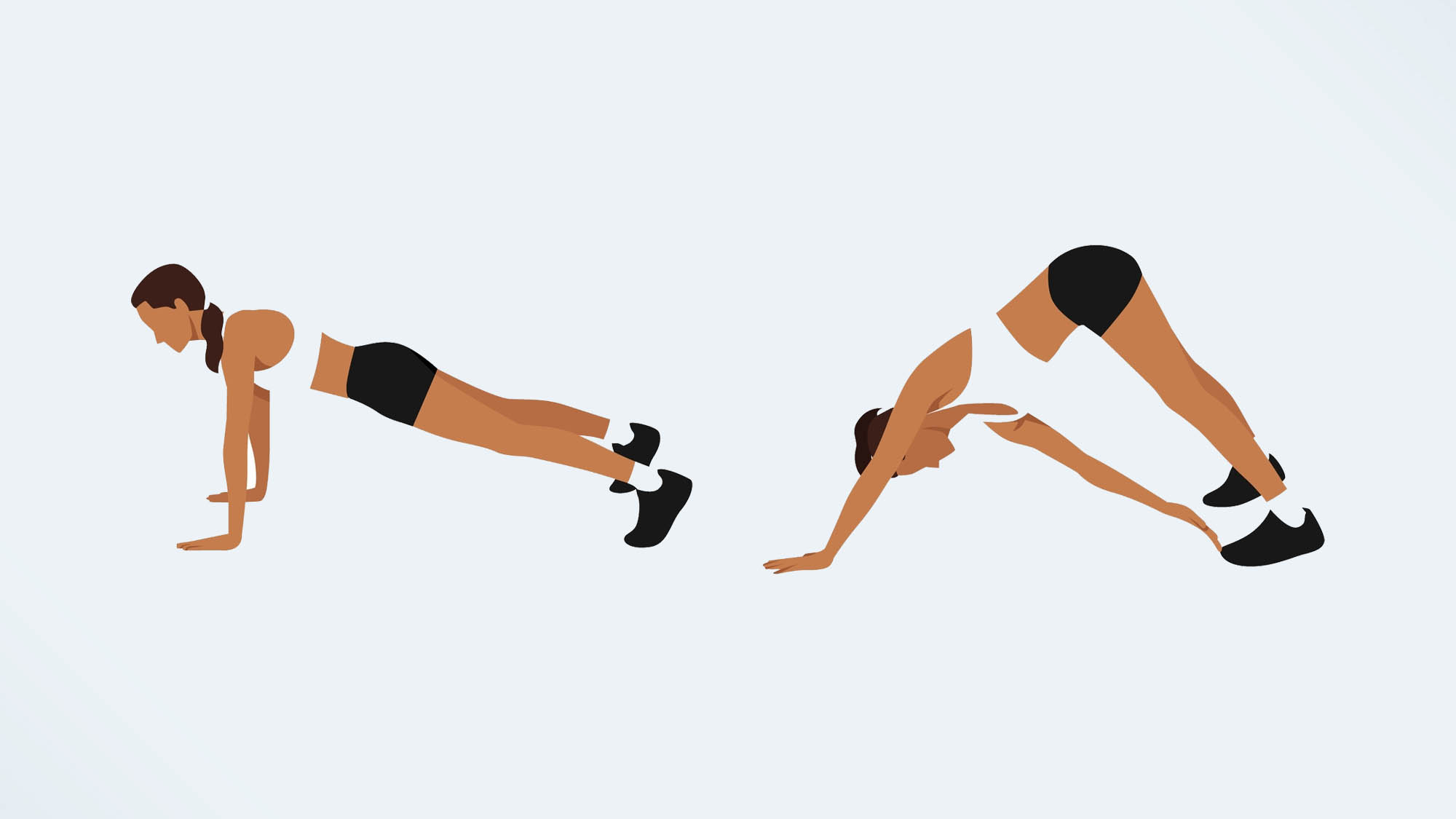I did the X plank for a week — here’s what happened to my core
A little core work mixed with a little stretching: you’ll be surprised how well it works

The basic plank is a great exercise for building your core, which can help prevent back injuries and is great for overall stability and posture. It’s not the most exciting move in the world, but there are many variations that can add to the challenge and get other muscles in on the act. One of these is the X plank. Not familiar with it? Neither was I until my editor set me the challenge of doing it every day for a week. Once again, I just couldn’t thank her enough.
What is an X plank?
Tricky one, this, as there are a couple of moves that use the same name. The stationary version goes like this: get into a plank position, but with your arms and legs spread, and hold. I tried this for the sake of comparison: I found my lower core was instantly being worked hard, as were the outsides of my thighs. It’s something I think I will return to. But I wanted to try the dynamic version, in which you move from a plank into a downward-facing dog position and tap each lower leg or ankle with the opposite hand. For the first few days of the challenge, I wished I’d gone for option one.
The move works the core, of course, and works it hard, but it also improves your flexibility (or lets you know you don’t have much to speak of) and range of motion in your hips, and throws in a terrific calf stretch. It gives the shoulders something to do, too, as you will be balancing on one arm or the other during the move, and stability is crucial for good form. There’s a lot going on here. If you do yoga, you will find this move far easier than those — such as myself — who think the chair pose is the same as sitting down.
One more thing: if you do this move while wearing a loose T-shirt or top, it will ride up and fall onto your face. This is not a good look.
How to do an X plank
Here's how to nail the X plank with perfect form:

- Begin in a high plank position, forming a straight line from your feet to your head. Rest on the balls of your feet and your palms. Your arms should be straight, with your elbows and hands directly under your shoulder. Engage your core to ensure your body doesn’t sag.
- From here, breathe in, raise your hips as you lift your right hand off the ground, and reach back to touch your left ankle without bending your knees. You may not be able to reach that far to begin with. Concentrate on getting into the downward-facing dog position rather than straining to touch the ankle. It will come, in time.
- Breathe out as you return to the starting position, then do the move with the left hand, touching the right ankle. That’s one rep.
- Do 5-10 reps for one set, and aim for three sets.
I did the X plank for a week and this is what happened
I couldn't reach my ankle
Unless you do yoga, you will probably find this an unnatural movement, and difficult to begin with. I certainly did. On day one, I felt it all over the place: shoulders, arms, glutes, and abs. I also noticed a good stretching sensation in the backs of my legs. But I was racing through the reps to maintain the illusion of decent form. I managed three sets of eight, but could not touch my ankle — I could reach down as far as my shin. I was sure this was because I was not raising my hips high enough. When you’re focused on touching or reaching a particular point, it’s easy to neglect the motion that allows you to do so. Instead, you try to stretch the arm just that bit further, forgetting that the solution is above, in the hips. By the end of the final set, I was out of breath, a sure sign I was forgetting to inhale and exhale in a controlled manner as I moved through the stages of the exercise. The final lesson from day one is this: wear shoes or go barefoot, or you may find yourself slowly and shamefully sliding to the floor.
It made me focus on my breathing
For day two, I resolved, as I always do, to concentrate on the full move — not just the perceived goal (touching my ankle), but how to get there as smoothly as possible (lifting my hips) and engaging my core throughout. This time I felt a stretch along my back, which I took as a good sign. If that wasn’t enough, I found I was able to reach lower down the shin, almost to my ankle. From this position, your breathing will be somewhat restricted, so concentrate on slow, regular breaths to ensure you can comfortably complete the sets.
Get instant access to breaking news, the hottest reviews, great deals and helpful tips.
It was harder than expected
The following day, I was able to add a couple of reps to each set. I went for a run afterward and found the move had been a surprisingly effective way of warming up my body. I was loose and relaxed.
On day four, I was able to touch my ankles without stretching to the point of discomfort. That was a considerable improvement on day one and it was all down to patience and concentration. You have to think when you’re doing this move: it’s crucial that you maintain a straight back and legs, which is not as easy as it sounds when you’re stretching to touch your ankles. I had a tendency to forget about raising my hips as far as I comfortably could, even though this made the second part of the move far easier.
It helped me stretch, and work my abs
In the final few days, I added more reps, ending up with three sets of 15. Not a huge advance in reps, but by the last day I was able to touch my midfoot, a measure of improvement in my reach that surprised me. I had come a long way in only seven days: my form was good throughout, I was doing more reps, and I had improved my range of motion. That’s a success.
If yoga is part of your fitness routine, you probably won’t get much from this move — you’ll already be doing plenty of stretching and core work — but if, like most people, you don’t stretch enough, this is a good way to work your core and improve your flexibility at the same time. Just watch out for the loose T-shirt.
More from Tom's Guide
- I did a plank every morning for a week and was surprised with the results
- I did 10-minute RKC planks every day for a week — here's what happened to my core
- 12 best plank variations to build core strength and muscle
John is a writer and editor based in London. He was worked for magazines such as Runner’s World, Men’s Health, Women’s Health and Cosmopolitan. A keen runner, what he lacks in ability he makes up for with enthusiasm and excuses.

